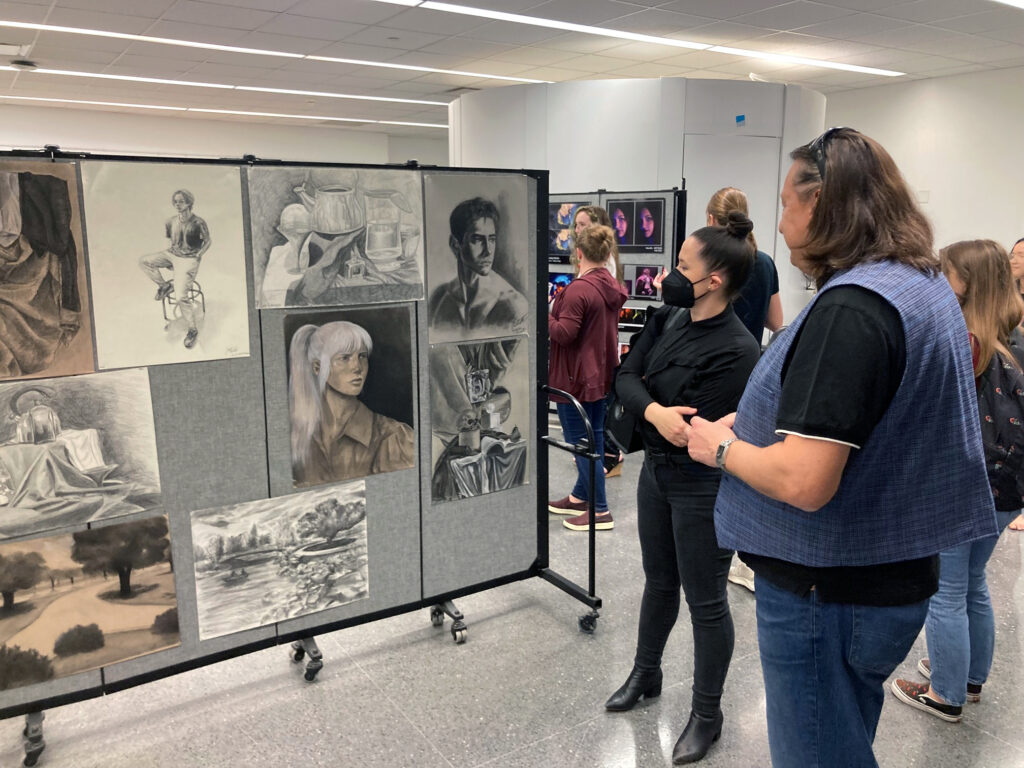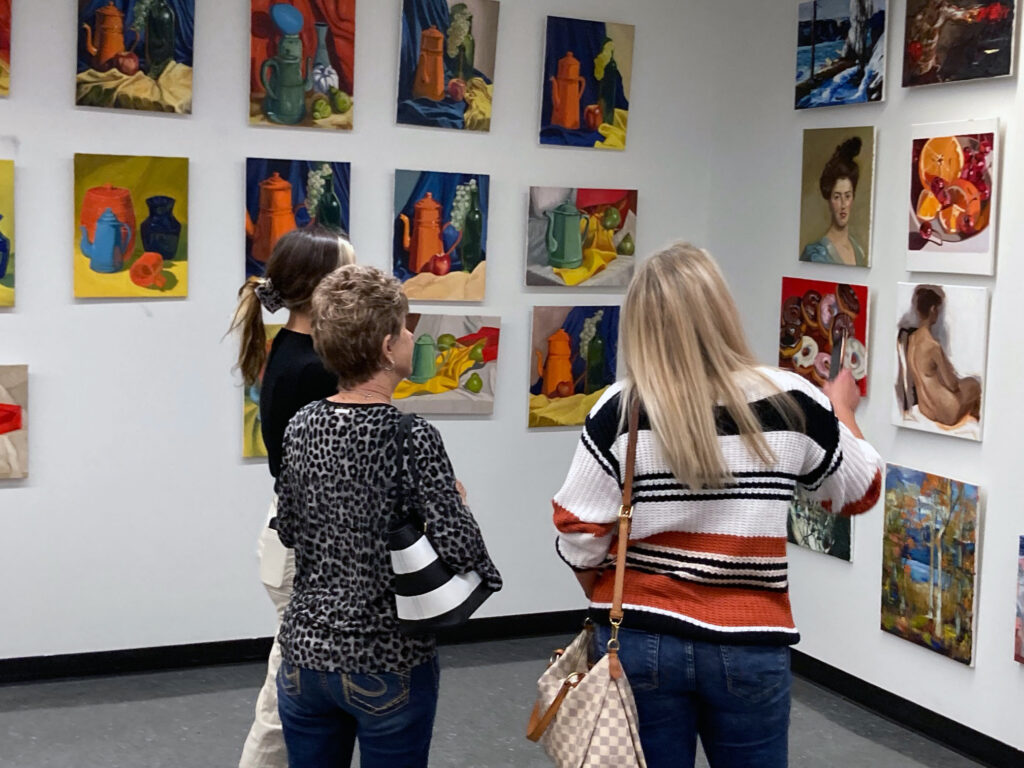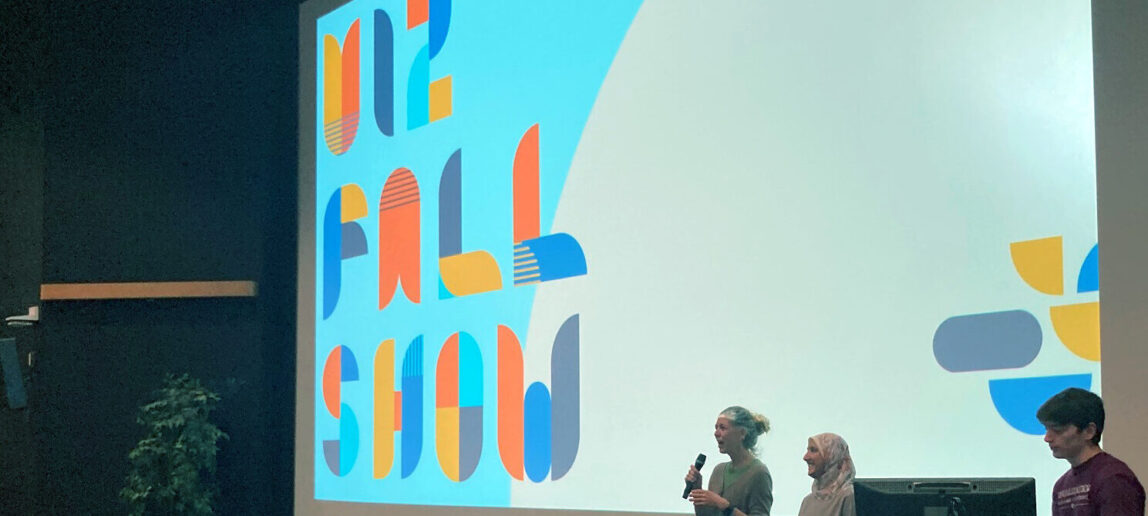Viz Fall Show recap: Packed house shows love for animation projects
It was standing room only Thursday night at Texas A&M’s Geren Auditorium as a packed house cheered on visualization students’ animation, gaming and other projects.
The screening was the culmination of the Viz Fall Show, an exhibition in the Langford B and C buildings that explored the array of works completed by the students, from flatwork and sculpture to virtual and augmented reality.
Students in the crowd provided their own entertainment at the screening, cheering or gasping as they recognized the work of their fellow creators as each piece began and when their names appeared in the credits. Works ranged from graceful (a curious wolf character in “Moon Struck”) to spooky (a creepy doll in “Forsaken”) to witty (a chameleon burglar in “Sticky Situation”).
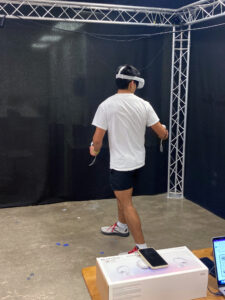
As attendees moved through the halls and rooms of Langford B and C — lined with tables full of pizza — they examined and discussed the drawings, paintings and photography. The experiences on the second floor of Langford C were especially popular, with people wearing virtual-reality goggles and then moving and reacting to the visual environments.
Jay Figueroa described the carnival-based virtual-reality game he worked on with other students about the Puerto Rican culture of salsa music.
“We decided to choose a balloon and darts game to where you can either throw the darts or shoot the darts,” he said. “You hit these balloons that release the sound of salsa percussion. There are six different instruments, and you can play the variety of them. And there’s an endgame screen that teaches you a little bit about salsa.”
A quartet of students — Isabella Bradberry, Isabel Rollo, Dylan Heathcock and Lawrence Soberanis — also created a cultural virtual-reality game for their interactive virtual environments class. All four have an interest in Mexican culture, Bradberry said, and that helped them create a game with Mexican artistic influences. This includes Day of the Dead, and the user’s controller is a piñata bat in the virtual environment.
“Typically, from what I read in our research, Day of the Dead doesn’t have piñatas, but I’ve met people who have piñatas on Day of the Dead,” Bradberry said. “So in order to kind of make up for it, rather than having the sugar skulls in the game, we decided to make them as our piñata. There are different aspects of Day of the Dead and influences that you can see through the visions of the game.”
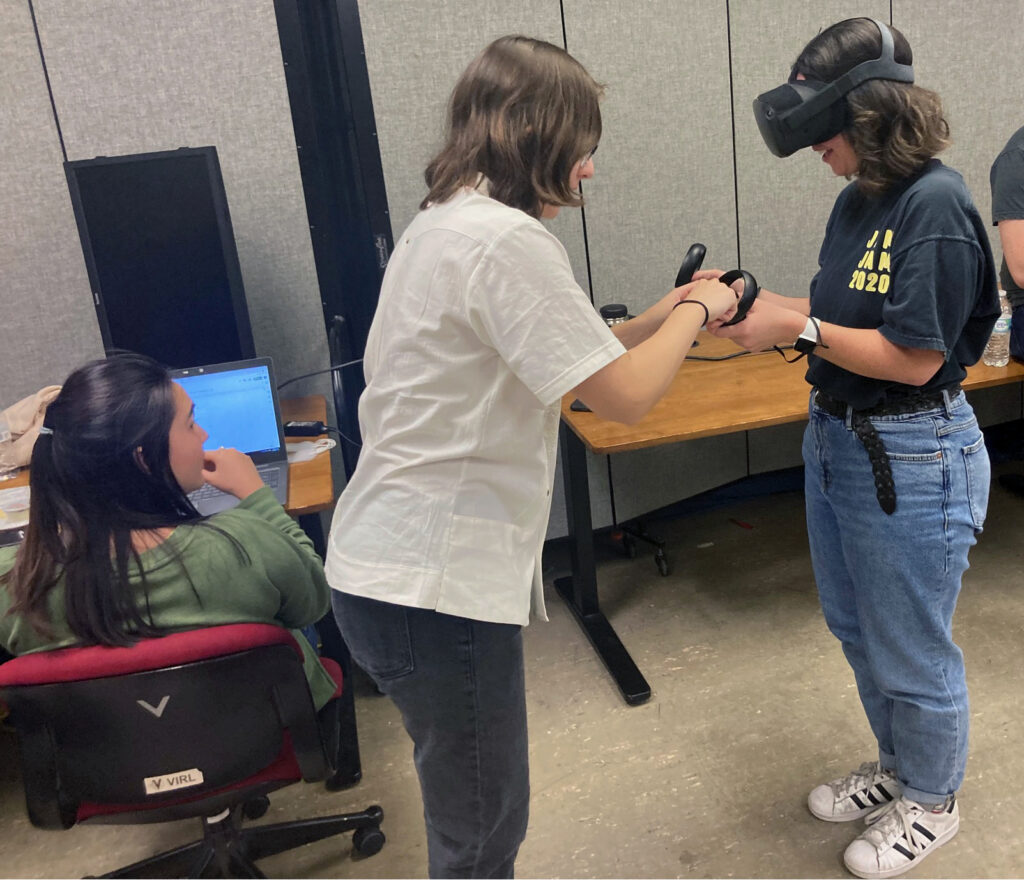
Fellow student Charlotte Shawver played the game as the students described it, gleefully whacking away with the controller at the virtual skulls.
“We found out while we were developing the game that probably the most fun part was hitting things with the piñata bat,” Rollo said. “A lot of the reps of our mechanics utilize that. We tried to focus on that as a fun little arcade game.”
The next chance to see a large public display of visualization students’ work will be the annual Vizagogo presentation at the end of the spring semester. It will be the 30th installment of Vizagogo, with more details to be announced.
